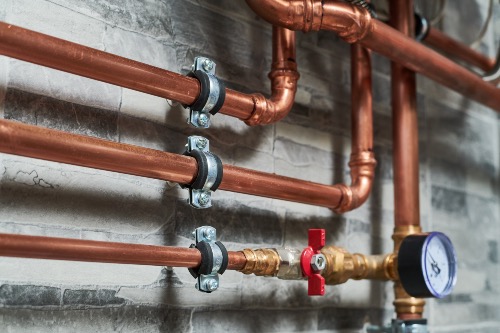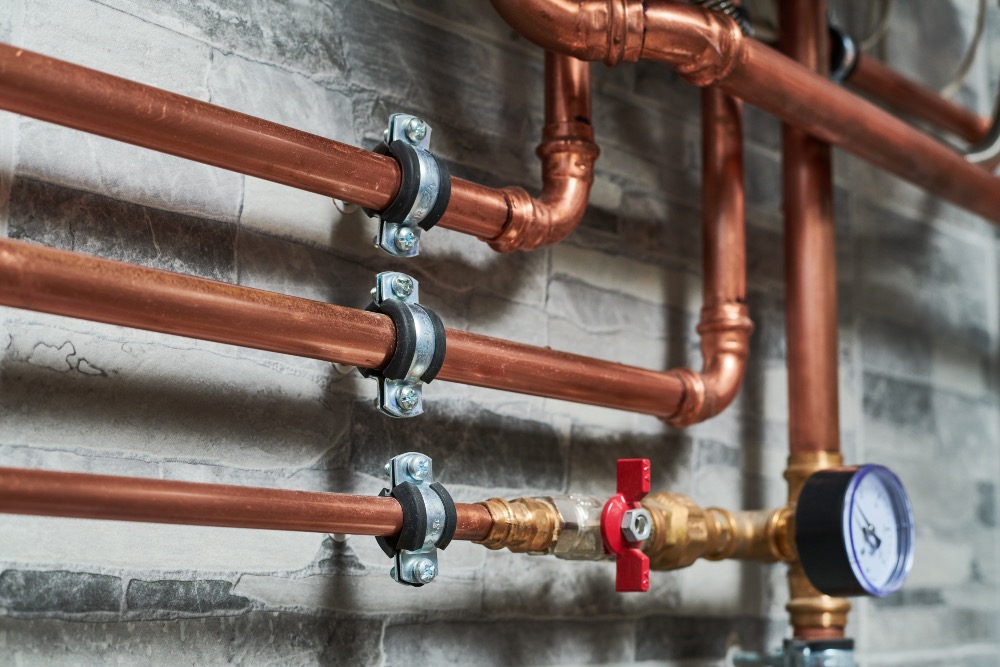Last Updated: Tuesday, 5th March 2024
Top Mistakes to Avoid When Using Copper Press Fittings
Thanks to their speed and reliability, Copper Press Fittings have emerged as a popular choice for professionals plumbers and installers in the construction world. However, even the most straightforward products can have problems used incorrectly. To ensure the longevity and performance of your plumbing systems, check out these top 10 mistakes to avoid when using Copper Press Fittings.
1. Not Properly Preparing the Pipe
The start of every pipe connection lies in the preparation of the pipe. If you don't properly clean, deburr and cut the pipe flat and perpendicular, it can lead to leaks and weak joints. Always ensure the pipe is free from dirt, debris, and any burrs to maintain the integrity of the connection.
2. Not Calibrating your Press Tools
A correctly calibrated press tool is essential for a successful press connection. An under or over-calibrated tool can lead to incomplete seals or damaged fittings. Regularly check your tool's calibration according to the manufacturer's specifications to ensure optimal performance.
3. Failing to Fully Insert the Pipe into the Fitting
For a secure connection, the pipe must be fully inserted into the fitting, right up to the pipe stop. If you haven't fully inserted the fitting, there may be insufficient pipe inside the fitting for the seal to form, leading to weak joints that are prone to leaks and failures. Always mark the depth on the pipe before insertion to ensure it's fully inserted.
4. Pressing the Fitting at the Wrong Angle
Applying the press tool at the wrong angle can compromise the fitting's integrity. Ensure the tool is aligned correctly and the jaws are squarely positioned before pressing. This ensures even pressure distribution along the seal as the fitting was designed and therefore a proper seal.
5. Not Checking for Leaks After Installation
Even with the most careful installation, it's crucial to test each connection for leaks. Water testing or pressure testing can help identify any issues before they become major problems. Never skip this step, as early detection can save time, money and resources.
6. Reusing Fittings After a Failed Press
Once a fitting has been pressed, it's designed to be a permanent connection. If a press fails, the fitting should not be reused. Attempting to do so can result in unreliable connections. Always replace any fittings involved in a failed press with new ones to ensure your plumbing system performs as expected.
7. Ignoring Manufacturer's Instructions
Each brand of Copper Press Fittings may have specific requirements or recommendations. Ignoring these instructions can lead to bad installations and system failures. Always read and follow the manufacturer's guidelines to ensure correct installation and warranty compliance.
8. Using Damaged or Expired Fittings
Inspect all fittings for manufacturing defects or degrading of the fitting or seal through age. Using compromised fittings will lead to system failures. Look for signs of corrosion, damage, or past shelf-life, and only use fittings that are in good condition.
9. Neglecting Safety Procedures
Safety should always be a priority when working with copper press fittings. Wear appropriate protective gear, and ensure you're using tools correctly to avoid injuries. Remember, cutting corners on safety can lead to accidents and compromised work quality.
Conclusion
While Copper Press Fittings offer a modern and efficient solution for plumbing installations, their performance is still reliant on proper use and installation. By avoiding these top mistakes, you can ensure a secure, leak-free plumbing system. Remember, good preparation, attention to detail, and adherence to safety and instructions are key.
Frequently asked questions
Why is it important to prepare the pipe before using Copper Press Fittings?
Properly preparing the pipe is key to ensuring a clean, smooth surface that can form a secure, leak-free connection with the fitting. This includes cleaning, deburring, cutting it flat and perpendicular, and inspecting the pipe for any damage.
What happens if the press tool is not correctly calibrated?
Incorrect calibration can lead to bad seals or damaged fittings, which will likely create a bad connection. Always follow the manufacturer's guidelines for calibration.
How can I ensure the pipe is fully inserted into the fitting?
Mark the insertion depth on the pipe before installation. This mark should meet the edge of the fitting when fully inserted, ensuring a complete and secure connection.
What should I do if a press fitting fails?
If a press fitting fails, it should not be reused. Remove the faulty fitting, inspect the pipe for damage, and replace it with a new fitting to ensure a secure connection.
Why is it necessary to check for leaks after installation?
Checking for leaks ensures that all connections are secure and there are no faults in the system. Early detection of leaks can prevent water damage and expensive repair costs.
Can I use damaged Copper Press Fittings?
No, damaged or expired fittings can compromise the integrity of the plumbing system. Always inspect fittings before use and replace any that show signs of damage or wear.
What safety procedures should I follow when using Copper Press Fittings?
Wear appropriate safety gear, follow the tool manufacturer's instructions, and ensure the work area is safe and suitable for using press tools. Safety measures are crucial to prevent accidents and ensure quality installations.
What are the consequences of ignoring the manufacturer's instructions for Copper Press Fittings?
Ignoring the manufacturer's instructions can lead to improper installation, voided warranties, and potential system failures.
Any more questions?
If you have any queries or questions about the products we sell, or even your next project, give us a shout! We'll try our best to give you a hand.

